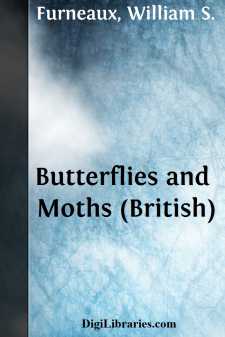Categories
- Antiques & Collectibles 13
- Architecture 36
- Art 48
- Bibles 22
- Biography & Autobiography 813
- Body, Mind & Spirit 142
- Business & Economics 28
- Children's Books 15
- Children's Fiction 12
- Computers 4
- Cooking 94
- Crafts & Hobbies 4
- Drama 346
- Education 46
- Family & Relationships 57
- Fiction 11828
- Games 19
- Gardening 17
- Health & Fitness 34
- History 1377
- House & Home 1
- Humor 147
- Juvenile Fiction 1873
- Juvenile Nonfiction 202
- Language Arts & Disciplines 88
- Law 16
- Literary Collections 686
- Literary Criticism 179
- Mathematics 13
- Medical 41
- Music 40
- Nature 179
- Non-Classifiable 1768
- Performing Arts 7
- Periodicals 1453
- Philosophy 64
- Photography 2
- Poetry 896
- Political Science 203
- Psychology 42
- Reference 154
- Religion 513
- Science 126
- Self-Help 84
- Social Science 81
- Sports & Recreation 34
- Study Aids 3
- Technology & Engineering 59
- Transportation 23
- Travel 463
- True Crime 29
Butterflies and Moths (British)
Description:
Excerpt
CHAPTER I
GENERAL CHARACTERS
The word Lepidoptera, which you see at the head of this page, is the name of the order of insects to which this volume is to be devoted. It is formed from two Greek words, one (lepis) signifying a scale, and the other (pteron) denoting a wing; and was applied by the great naturalist Linnæus to the scaly-winged insects popularly known as Butterflies and Moths.
Fig. 1.—Scales from the Wings of Butterflies.Every one of my readers has undoubtedly handled some of the interesting creatures of this group—having been led to do so either by the extreme beauty of their clothing, or, perhaps, from a murderous intent in order to protect his own garments from the ravages of a supposed marauder. A light mealy powder will probably have been observed afterwards on the fingers that have touched the victim's wings.
This powder, although it sometimes presents a beautiful glossy surface when spread over the skin, does not exhibit any definite form or structure without a more minute examination. Yet these are the scales that led the immortal naturalist to invent the somewhat long but useful term Lepidoptera.
The very next time the opportunity offers itself, dust off a little of the mealy powder with a small and very soft brush on to a strip of white paper or a slip of glass, and examine it with a powerful lens or the low power of a compound microscope. What a sight you will then behold! Each little particle of dust is a beautifully formed scale, stamped with a number of minute rounded projections, and often displaying the most gorgeous colours. A great variety of designs and tints are often exhibited by the 'dust' from a single wing. Take, for instance, for your inspection, scales from the wing of one of our commonest insects, the Small Tortoiseshell Butterfly (
), and you will be surprised at the pleasing contrasts. But when your curiosity leads you to deal with others in the same manner, the varied display of forms and colours is simply amazing.Fig. 2.—Portion of the Wing of a Butterfly from which some of the scales have been removed.In order that we may learn still more of the structure of the wings of the Lepidoptera, we will examine a portion of one from which some of the scales have been removed, again bringing the lens or the microscope into our service. We now see that the scales are arranged in rows with great regularity on a thin and transparent membrane, which is supported by a system of branching rays. And the membrane itself, in parts which have been laid bare, is marked with regular rows of dots—the points at which the scales were originally attached by means of short hollow rods.
The framework that supports the thin membrane we have spoken of as consisting of a system of rays, but to these the terms veins, nerves, nervures, or nervules are more commonly applied by various naturalists. We cannot do better, however, than adhere to the name originally used, for the structures in question do not perform the functions of veins, though at first they contain blood, nor are they themselves parts of the nervous systems of the insects to which they belong.
The result of our examination of the wings of butterflies and moths has been to justify the application of the term Lepidoptera; but we must now study other equally important and interesting features of the structure of these insects....


